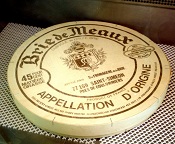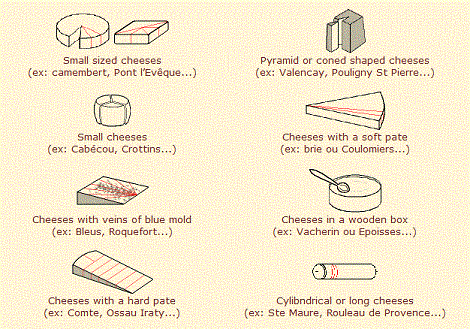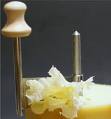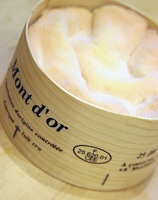 Adoration of the Magi - RubensOriginally Catholic, France officially became a non-religious country in 1906. But some traditions die hard. For example, aside from my friends who are Jewish or Muslim, nearly everyone I know in France considers themselves - without hesitation - to be Catholic. This is, of course, regardless of whether they have been inside a church for decades or not.
Adoration of the Magi - RubensOriginally Catholic, France officially became a non-religious country in 1906. But some traditions die hard. For example, aside from my friends who are Jewish or Muslim, nearly everyone I know in France considers themselves - without hesitation - to be Catholic. This is, of course, regardless of whether they have been inside a church for decades or not.
The result of this pervasive Catholic influence is a culture that still embraces many religious days, often as public holidays. After all, who wouldn’t turn down a paid day-off work regardless of which religion happens to be celebrating that day?
This week, there is an important holiday with a religious origin - Epiphany. Generally considered by Christians to mark the day that the three Kings visited Jesus to celebrate his nativity, Epiphany has been fixed in France to the 6th of January since 1801. Celebrated as early as the 5th Century, Epiphany was initially more important to Christians than Christmas day.
Like many Christian holidays, Epiphany has its origins in an earlier pagan festival. The Romans celebrated this day as Saturnalia whose festivities lasted seven days. Saturn was the Roman God of time so perhaps it was related to the New Year. On the first day of the celebration the soldiers drew lots, using a bean to determine which death row inmate would become "King" during the week of the festival. Once the Saturnalia was over, the sentence was executed as was the inmate. It sounds cruel I know, but don’t forget there have been plenty of real Kings for whom the good times ended in execution. Louis XVI certainly comes to mind.
Today, the dual ideas of Saturnalia and Epiphany have evolved in France to become an important moment for seasonal food which is commonly celebrated regardless of a family’s religious beliefs.
The imp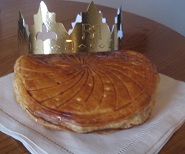 ortance of this “right” moment in the season became clear to me a few days ago when I stopped by my friend MC’s for an afternoon coffee and chat. Even though Epiphany was a few days away she had bought an Epiphany cake, called a Galette des Rois (King’s Cake) as a special treat for her children’s after school snack. We were already enjoying a couple of slices with our coffee when her two young children came home from school. Like kids everywhere, they were eager for a snack. A smiling MC revealed the cake to the children, delighted to share the surprise. For a brief moment both children were smiling too, but when MC asked what size pieces they'd like, their smiles disappeared. Puzzled, she asked what was up. Her daughter, who is seven, piped up instantly. “We can’t eat that today, it’s too early. We have to wait until the 6th.” Besides, she continued “there are not enough people for the game - we need more to make it fun.” Her shy brother, almost five, nodded from behind her in agreement.
ortance of this “right” moment in the season became clear to me a few days ago when I stopped by my friend MC’s for an afternoon coffee and chat. Even though Epiphany was a few days away she had bought an Epiphany cake, called a Galette des Rois (King’s Cake) as a special treat for her children’s after school snack. We were already enjoying a couple of slices with our coffee when her two young children came home from school. Like kids everywhere, they were eager for a snack. A smiling MC revealed the cake to the children, delighted to share the surprise. For a brief moment both children were smiling too, but when MC asked what size pieces they'd like, their smiles disappeared. Puzzled, she asked what was up. Her daughter, who is seven, piped up instantly. “We can’t eat that today, it’s too early. We have to wait until the 6th.” Besides, she continued “there are not enough people for the game - we need more to make it fun.” Her shy brother, almost five, nodded from behind her in agreement.
So once again, here I am baffled by French culture. How often have you seen a child turn down a delicious treat simply because it wasn’t the "right time”? I’d venture to say never. Even stranger about this is the fact that a very similar dessert exists at other times of the year with a different name – a Pithivier Frangipane. I wonder, had MC offered her kids a slice of this Pithivier would they have eaten it?
The Galette des Rois is a simple confection made of two layers of puff pastry filled with Frangipane, a fairly dense almond filling. MC had bought hers at Eric Kayser and it was one of the best I’ve ever tasted with a light, yet brightly flavored layer of Frangipane.
As her daughter mentioned, along with the special cake, there is game that traditionally is played when the cake is served. Having played many times over the years I understand the game pretty well . The galette is served at the end of a large meal at home which is most often a family affair or a gathering of close friends.
At just the right moment, after the cheese and before the coffee, the Galette is brought out with much fanfare. Once placed on the table, the game begins. The youngest present (hopefully a child) is sent under the table to select who will get the first piece of cake. The pieces are distributed following the direction of the youngest from under the table. Once everyone has a piece, the youngest takes his or her place at the table and everyone enjoys their cake. Note - If you ever participate in a Fete de la Galette be aware that it’s important to chew your Galette des Rois carefully. You see, inside every cake there is a special Fève (bean) similar to the bean in the story of the Roman Saturnial. Every bakery has their own version of the Fève, varying from a tiny day-glo plastic baby to a porcelain figure or even a gilded metal bean for the most chic Galettes. The primary difference between the Galette des Rois and the Pithivier Frangipane is that there isn’t a fève inside a Pithivier.
My friend S also reminded me that since the Galette is fairly easy to make, it’s quite often made at home. The advantage, if you grew up in a large family like he did, is that Grandmère can “forgetfully” put more than one fève in the cake to ensure more smiling grandchildren. It’s also not unusual for the person cutting the slices to “stack the deck” by peeking under the top layer of crust to make sure the youngest (who’s under the table) gets the féve. King Oscar - Le Roi de 2010!
King Oscar - Le Roi de 2010!
If you get the Fève in your slice, you are entitled to choose the King or Queen who must wear the special crown that comes along with the cake. Made of shiny gold cardboard, it’s much like one you might see at Burger King. Depending on the ages of the group this can be a way to delight children or embarrass adults, all in good fun of course.
Fortunately, I have never had to do the crawling around under the table. However, I do remember one memorable Fête de la Galette when I was working for a software company in the suburbs of Paris. The President of company, who wasn’t French, had the mistaken idea that celebrating the Galette des Rois in the office would be a good team-building exercise. That fateful afternoon, he gathered the team in the conference room. The unfortunate guy who happened to be the youngest, despite being in his mid-thirties, was forced under the table in accordance with tradition. Truly a good sport, he performed his duties as required while the rest of us looked uneasily at one another. In the end, things didn't turn out so well for the boss. You see, the woman who got the fève was brave enough to name him King and he was obliged to wear the silly crown the rest of the afternoon. We were never quite sure if he realized the joke was on him.
While writing this post today, I saw a news story on television about the special Galette des Rois made for l’Elysee (The French equivalent of the White House). Besides explaining which baker had the honor to make the enormous Galette and how he did it, the highlight of the story was seeing Nicolas Sarkozy, the President of France, cut the first piece.
There wasn’t however, the journalist confirmed, ever a fève placed in this special Galette. Because France is a republic, no one can name the President King. Frankly, I think it's much like my experience at the office and actually no one wants to risk seeing the President of the Republic reduced to wearing a silly paper crown.
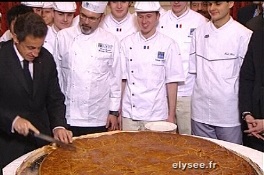 Click image for video highlights of event
Click image for video highlights of event
 Monday, March 22, 2010 at 10:16AM
Monday, March 22, 2010 at 10:16AM  French Perfume CreationAnother new project, a Perfume workshop, is especially exciting and unique way to experience Parisian life and French culture.
French Perfume CreationAnother new project, a Perfume workshop, is especially exciting and unique way to experience Parisian life and French culture. components and the process of creating perfume. Learn how the top middle and base notes define the unique signature of a perfume. How to select the perfect personal fragance - your signature scent.
 French Perfume,
French Perfume,  Paris Apartments,
Paris Apartments,  Perfume Creation in
Perfume Creation in  French Culture,
French Culture,  Tours,
Tours,  Workshops
Workshops 

